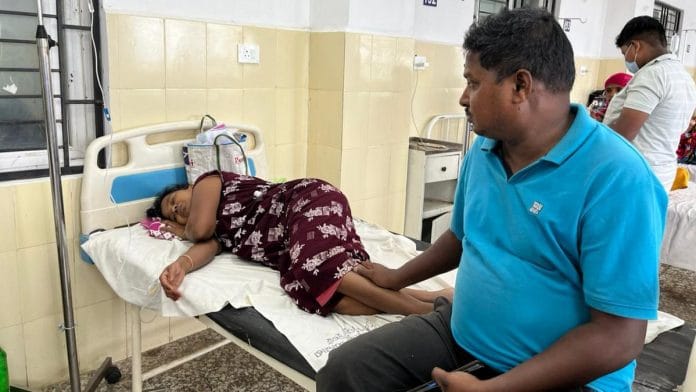Jajpur: A season of celebration has ended with 21 funerals in Odisha. And more may be coming. It began with lavish feasts for the three-day Raja festival, weddings, and engagements in Jajpur district. Thousands ate together. Soon after, people began vomiting and collapsing. A diarrhoea and cholera outbreak has overwhelmed hospitals, and what started in Jajpur has now spread to at least eight other districts.
There have been an estimated 2,500 cases so far. Odisha Health and Family Welfare Secretary Aswathy S said cholera was found in 10 per cent of samples tested. At least 10 water samples from affected areas have also reportedly tested positive for E.coli, indicative of widespread contamination.
The state has now declared a high alert across all 30 districts. Control rooms are monitoring the situation around the clock. Eateries are being raided. Disinfection and water purification drives are underway. A central team is on the ground, running awareness campaigns on hygiene and food and water safety.
Critics, meanwhile, allege “systemic neglect”, pointing to the fact that over half of rural households in districts like Jajpur rely on untreated borewells or open water sources, and that drains and broken sewage systems let faecal matter seep into groundwater, especially during the monsoon. Cholera is a recurring problem in the state, with the last major outbreak in December 2023, where at least 1,000 people in Rourkela were affected, with at least six deaths. According to a 2022 study, the state has had 19 outbreaks between 2011 and 2020.
From now on, we’ll drink only boiled water. It was so difficult. I was scared she might not recover. We didn’t even attend any mass gatherings and still got infected
-Dilip Jena, whose wife was hospitalised in Jajpur
This time, the cases started trickling in on 10 June, said Avnesha Reddy, collector of Jajpur district, attributing it to the spate of mass gatherings that took place in the days prior.
“People celebrate like this; they invite the entire village. It happened because of water and food contamination. We have issued guidelines to people not using nadai, talab, nala for any usage. And drink boiled water,” she added.
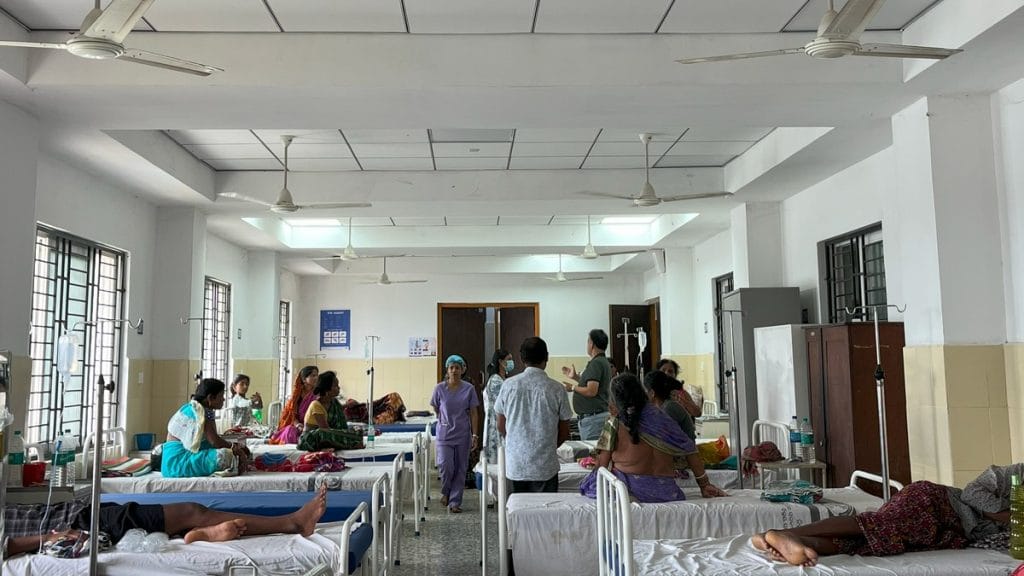
Across 13 health care centres in Jajpur, 233 patients are receiving treatment for illnesses caused by contamination, and there were 17 active cases of cholera as of Wednesday; one of these cases was confirmed the same day. So far, 117 patients recovered and returned home. The other affected districts include Bhadrak, Kendrapara, Cuttack, Dhenkanal, Keonjhar, Puri, and Balasore.
People have been advised not to eat outside. Local snack carts have vanished from the streets. Vendors selling water cans are being inspected. ASHA workers are going door to door to educate people, and ORS and halogen tablets are being distributed in every household.
“The administration is conducting these awareness programmes in every block and village. There are WhatsApp videos in every panchayat group to tell people how to react when such a situation occurs,” said Manoj Jena, a resident of Jajpur.
Also Read: Gopalpur gangrape survivor has locked herself away. Tourists say ‘won’t come here, scary’
A district in panic
Twenty-five-year-old Puja Samda was married to Ghachiba Munda five years ago. When they went out to celebrate the Raja festival, they didn’t know it would be the last time together. On Tuesday night, Samda fell unconscious after a bout of vomiting and diarrhoea. Munda rushed her to the Chunabhati block hospital, but doctors declared her dead within 30 minutes of arrival.
“He is not talking to anyone after that. He is not eating. Just sitting in a corner of the house alone. They planned a whole life together and now they have to carry that burden,” said one of Munda’s relatives.
The entire village is mourning her death. The block councillor visits their two-room house every day. There are other people who are sick too. The system is trying to help them recover and to prevent new cases.
Including Puja, at least nine people in Jajpur have died in the past few days after symptoms of acute dehydration and severe diarrhoea. Officials say many went into shock and died before reaching the hospital or were brought in too late.
A few kilometres away from Chunabhati block, 26-year-old Dilip Kumar Mallick succumbed to cholera at SCB Medical College in Cuttack. Health officials confirmed his death this week. Villagers in Tarailo, Kalapada, and Nanpur are expressing mounting fear as the disease disrupts lives during the Raja celebrations.
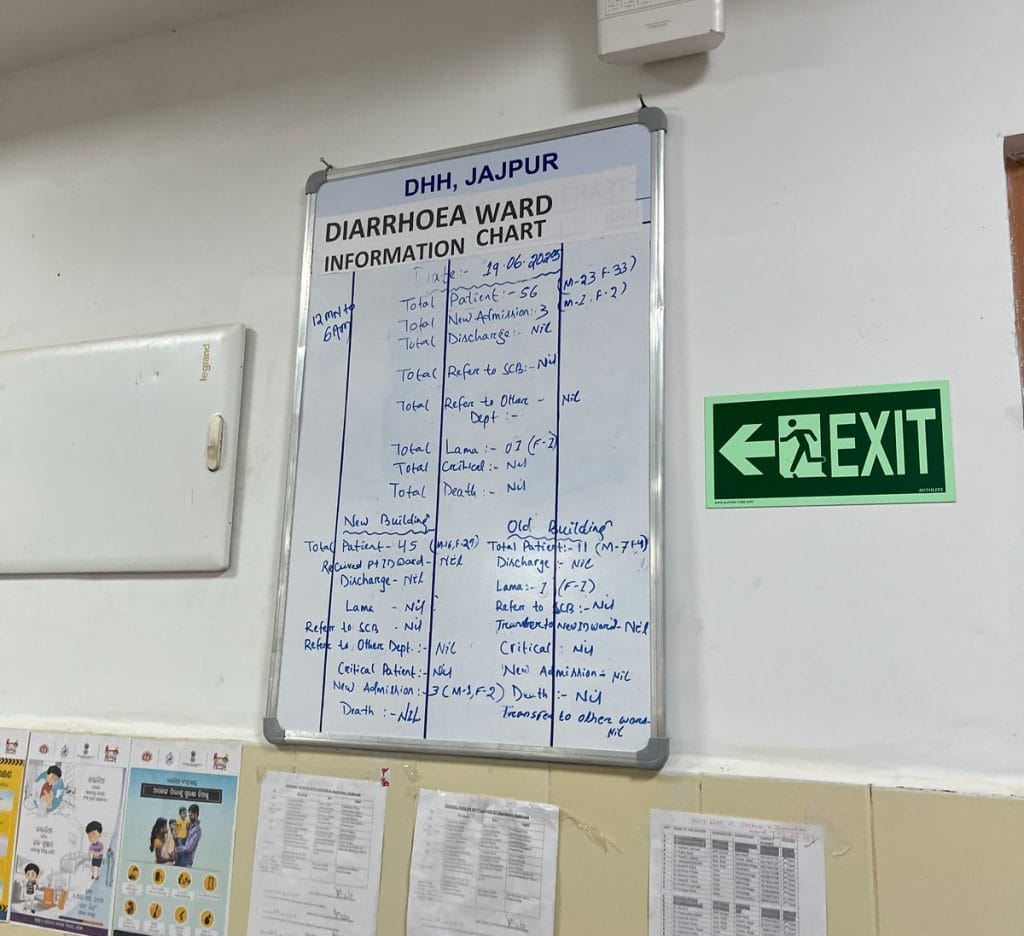
A central team monitoring the situation in Jajpur said 16 out of 49 stool samples tested positive for cholera, indicating a 33 percent infection rate.
Cholera is a severe and highly contagious bacterial infection caused by Vibrio cholerae. It leads to acute diarrhoea and rapid dehydration. While regular diarrhoea can be caused by viruses, bacteria, or food intolerances, cholera is more dangerous and can quickly become fatal if left untreated.
The board looks much better now. A week ago, it was horrible. The old building had only 22 beds for diarrhoea patients. So we converted this whole floor into a diarrhoea ward. A few beds are empty now. People are not that critical and the situation is getting under control
-Doctor at Jajpur district hospital
“In cholera, people pass rice-water stool, which causes rapid fluid loss and can push the body into shock or death if not treated. Sanitisation is very important—washing hands, avoiding outside food, and using clean toilets,” said Bijay Kumar Mishra, CDMO of District Hospital Jajpur.
Sukhna Sahoo, an ASHA worker, visits 50 to 70 houses each day, educating people about cholera and how to stay safe. It’s her main task for up to seven hours a day currently.
“This is an emergency. People are losing their lives. I meet the people and explain to them how this disease takes place. Tell them about what water contamination is, people don’t know that either. Then tell them if anyone gets sick then what should they do,” she said, walking briskly to her next stop.
‘We don’t know what cholera is’
Thirty-eight-year-old Mamta Barik was admitted to the hospital on Wednesday morning. Her brother Divyakar Barik sat beside her, comforting her as she lay with a drip in her arm.
“She ate too much chicken and that caused the diarrhoea,” he said. “We don’t know what cholera is. I just know she has symptoms of diarrhoea, like most people in the neighbourhood. They’ve taken her tests. I’m waiting for the result.”
Next to her was 30-year-old Sarodhi Jena, who is preparing to go home after five days in the ward. Her two children were waiting at home, while her husband Dilip Jena had taken notes on how to keep the family safe.
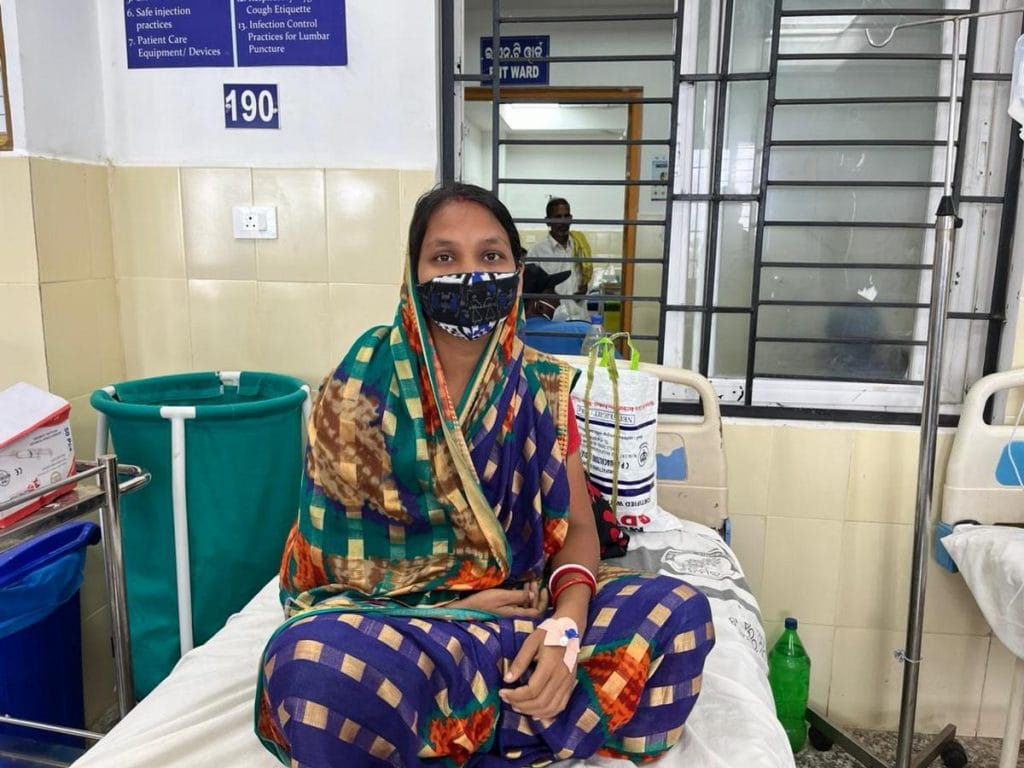
“It happens due to water contamination. So from now on, we’ll drink only boiled water. It was so difficult. I was scared she might not recover. We didn’t even attend any mass gatherings and still got infected. But it wasn’t cholera, it was normal diarrhoea,” said Dilip Jena, adjusting his mask in the diarrhoea ward.
Most patients here are women. The whiteboard in the hospital lobby is updated every six hours. As of 11 a.m. on Wednesday, 56 patients were being treated for diarrhoea—33 women and 23 men. Two women and one man were admitted that morning alone with these symptoms.
In cholera, people pass rice-water stool, which causes rapid fluid loss and can push the body into shock or death if not treated. Sanitisation is very important—washing hands, avoiding outside food, and using clean toilets
-Bijay Kumar Mishra, CDMO of District Hospital Jajpur
“The board looks much better now. A week ago, it was horrible. The old building had only 22 beds for diarrhoea patients. So we converted this whole floor into a diarrhoea ward. A few beds are empty now. People are not that critical and the situation is getting under control,” said a doctor who was making his rounds.
From the health minister to the health secretary to MLAs, top officials have been visiting Jajpur. Around noon on Wednesday, Minister Suryabanshi Suraj and MLA Akash Das Gupta visited the district hospital, met patients, and reviewed the situation with the collector and the CDMO.
“The rising number of cases is coming under control. The administration is conducting disinfection drives in the entire area. ASHA workers visiting every home and educating them how to be safe. Cholera cases are also not on the rise. We will be monitoring the situation very closely,” said Suraj.
Also Read: Scientists swarmed Maharashtra’s ‘bald village’. 4 months on, new symptoms, zero answers
Safety measures
The state machinery has scrambled into action. They are conducting daily reviews, door-to-door campaigns, and spreading awareness through social media videos. Different control rooms have been set up to monitor treatment, water disinfection, and recovered patients as well.
“One team is monitoring the cases, another is disinfecting. We are telling them to use the toilet. Every water source, government or private, has been going through disinfection. There are more cases of diarrhoea. Cholera cases are hardly 5 to 10 percent. We have issued a health advisory and are monitoring the situation closely,” said collector Reddy, who was present at the hospital during the minister’s visit.
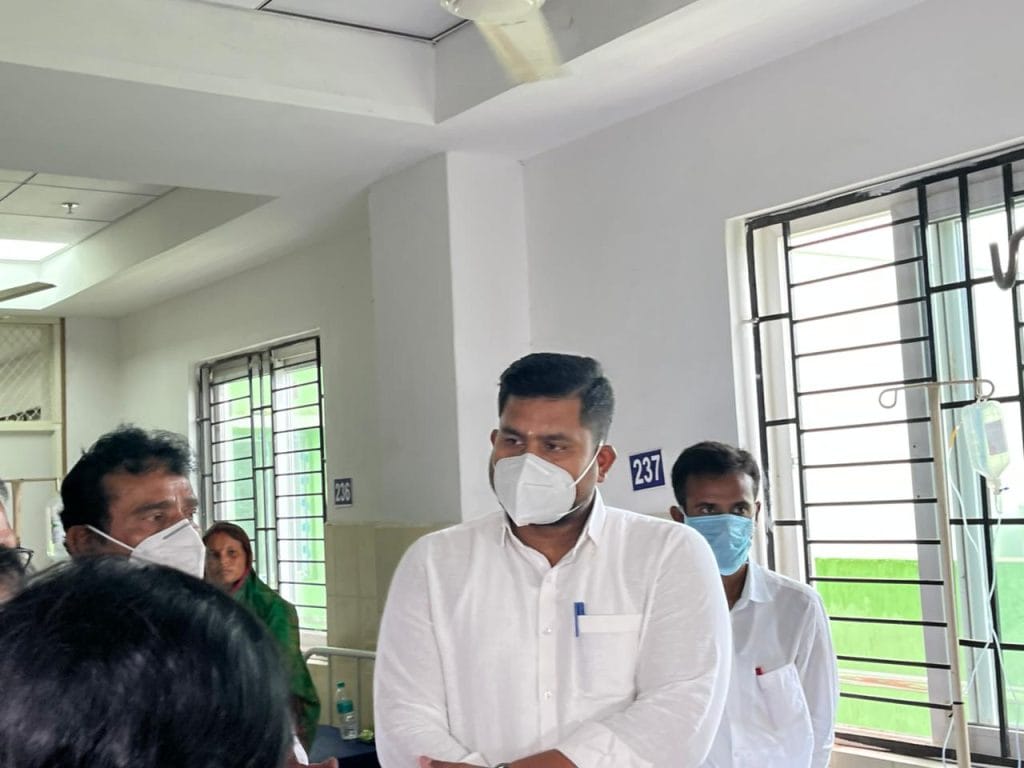
A 14-member central team has also been deployed to assess the situation, assist local health officials, and ensure implementation doesn’t fall through the cracks. Shibani Lahiri, a member of the central team, said the situation had been largely contained.
“There is no cholera outbreak. It is endemic that has witnessed a little surge in cases. We have seen an outbreak of diarrhoeal diseases. We have given suggestions to the state on water safety, food safety, maintenance of personal hygiene and awareness creation,” she added.
But state officials are not taking any chances.
“We’re in constant touch with a central team, which maintains that the outbreak does not yet qualify as an epidemic. But we are taking no chances and disinfecting all water sources, including in the 25 districts not currently identified as hotspots,” Awasthi told mediapersons. “A door-to-door awareness campaign by ASHA and Anganwadi workers is also underway in rural areas and will remain active for the next seven days.”
(Edited by Asavari Singh)



